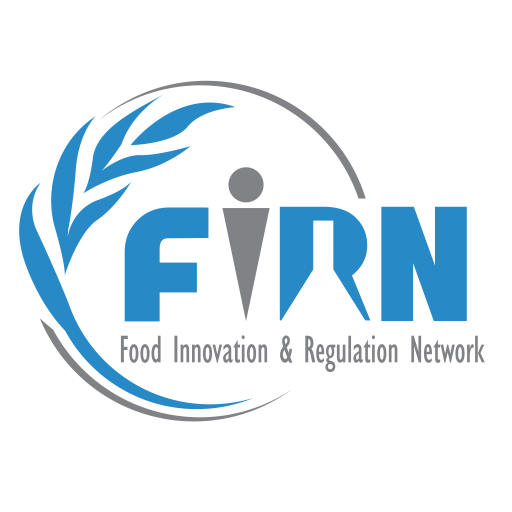ถูกกฎหมาย มีทิศทาง สื่อสารถูกต้อง
Innovation of Functional Food & Health Claims Navigation (English version below)
โดย: ศาสตราจารย์ ดร.ภาวิณี ชินะโชติ Prof. Pavinee Chinachoti, Ph.D.
Chair, Food Innovation and Regulation Network (FIRN)
Advisor, Food Science and Technology Association of Thailand (FoSTAT)
ในช่วงหลายปีที่ผ่านมา อุตสาหกรรมอาหารได้มีการตื่นตัวอย่างมากด้านอาหารเพื่อสุขภาพ ด้วยผู้บริโภคให้ความสนใจในสุขภาพมากขึ้น และวัฒนธรรมของไทยมีความเชื่อในสารอาหาร โดยเฉพาะเครื่องเทศ สมุนไพร และผักผลไม้บางชนิด รวมถึงจุลินทรีย์โพรไบโอติกส์ และเป็ปไทด์จากสัตว์ ว่ามีคุณสมบัติพิเศษในการบำรุงร่างกายได้ และมีความหวังว่าอาหารเหล่านี้จะช่วยลดความเสี่ยงในการเกิดโรคในอนาคตได้
อาหารฟังก์ชันนัลเป็นอาหารที่มีสารบางอย่างนอกเหนือไปจากสารโภชนาการ ที่มีการศึกษาแล้วว่ามีคุณสมบัติในการควบคุม หรือมีผลกระทบต่อการทำงานของอวัยวะหรือสรีระของร่างกาย ทำให้ร่างกายสามารถทำงานหรือฟังก์ชันได้อย่างสมบูรณ์ และลดโอกาสในการเกิดโรคได้ เช่น ไขมันไม่อิ่มตัวสูง โอเมก้า-3 ที่ได้ศึกษาแล้วพบว่าบางชนิดสามารถบำรุงการพัฒนาสมองในเด็กทารก เป็นต้น
นโยบายและแนวปฎิบัติของแต่ละประเทศ สำนักงานคณะกรรมการอาหารและยา (อย.) มีหน้าที่รับคำขออนุญาตการกล่าวอ้างทางสุขภาพจากผู้ขอ และมีกระบวนการขั้นตอนของการประเมินที่อาจจะเข้าใจยาก แต่ด้วยวัตถุประสงค์เพื่อให้ความคุ้มครองผู้บริโภคว่าอาหารดังกล่าวมีหลักฐานที่ดีสนับสนุนคำกล่าวอ้างนั้นจริงและมีความปลอดภัยต่อผู้บริโภค เป็นที่เข้าใจว่ากระบวนการนี้จะต้องใช้เวลาในการเตรียมเอกสารข้อมูลทั้งทางด้านผู้ขอและคณะกรรมการประเมินผล และกระบวนการนั้นมักจะเสียเวลากับการขอข้อมูลเพิ่มเติมและการทบทวนเอกสาร ดังนั้น ผู้ประกอบที่ยังไม่เคยผ่านการขออนุญาตมาก่อนอาจจะต้องเตรียมตัว เตรียมใจไว้ล่วงหน้า และไม่ควรรอจนนาทีสุดท้าย หรือจนพัฒนาผลิตภัณฑ์ให้เสร็จก่อนแล้วจึงจะมาเริ่มทำความเข้าใจกับการขออนุญาต เพราะอาจจะสายเกินไป
ธุรกิจอาหารเพื่อสุขภาพจะแบ่งได้หลายประเภท การพัฒนาอาหารดังกล่าวเป็นเรื่องที่ไม่ง่าย กว่าจะออกมาสู่ตลาดเชิงพาณิชย์ได้ ต้องอาศัยงานวิจัยระยะยาวที่ศึกษาจนได้ผลที่เป็นที่ยอมรับได้ในวงการวิทยาศาสตร์ และต้องสามารถพิสูจน์ได้ในกลุ่มเป้าหมาย
เป็นที่ทราบกันดีว่าภายใต้สภาวะของการขับเคลื่อนอาหารมูลค่าสูงออกสู่ตลาดนั้น อาหารเพื่อสุขภาพ อาหารฟังก์ชันนัล และผลิตภัณฑ์เสริมอาหาร (Supplement) นั้นมีโอกาสเพิ่มมูลค่าของผลิตภัณฑ์เกษตรไทยอย่างสูงมาก ความคาดหวังทางนโยบายชาติ ทางผู้ประกอบการ นักวิจัยในมหาวิทยาลัย และองค์กรของรัฐต่างหันมาให้ความสนใจขออนุญาต ทั้งนี้ เพื่อสนองการทำงานเชิงนวัตกรรมที่ต้องทำความเข้าใจในกฎหมายและการขออนุญาต ตั้งแต่เริ่มต้นของการพัฒนาผลิตภัณฑ์ โดยสาระสำคัญคือ
1. เข้าใจทางเลือกหรือทางเดินในการพัฒนานวัตกรรมอาหารเพื่อสุขภาพ หากอาหารที่พัฒนานั้นเป็นอาหารที่เคยมีประวัติในการรับประทานมาแล้วมากกว่า 15 ปี หากใช่ก็เข้าสู่การขอแสดงฉลากอาหารและการขอประเมินการกล่าวอ้างทางสุขภาพได้เลย หากไม่ใช่ ถือว่าอาหารนั้นต้องมีการประเมินความปลอดภัยก่อน (รวมถึง อาหารใหม่ หรือ Novel Food)
2. เข้าใจว่าการกล่าวอ้างนั้นมีกี่แบบ คือ
a. การกล่าวอ้างหน้าที่ของสารอาหาร (Nutrient function claims) เอกสารหลักฐานทางวิทยาศาสตร์ คือ การทบทวนวรรณกรรมอย่างเป็นระบบ (Systematic review) และการวิเคราะห์อภิมาน (Meta-analysis) ที่ผ่านการตีพิมพ์ในวารสารที่น่าเชื่อถือ หรือ ข้อคิดเห็นทางวิชาการที่เป็นที่ยอมรับและน่าเชื่อถือจากหน่วยงาน องค์กร หรือคณะผู้เชี่ยวชาญทางวิทยาศาสตร์ที่ได้รับการยอมรับโดยสากล หรือ รายงานผลการศึกษาในมนุษย์ที่มีการออกแบบอย่างดี (Well-designed human intervention study)ที่ได้รับการตีพิมพ์ในวารสารที่น่าเชื่อถือฉบับเต็ม
ตัวอย่าง “แคลเซียมมีส่วนช่วยในกระบวนการสร้างกระดูกและฟันที่แข็งแรง ผลิตภัณฑ์อาหาร ก. เป็นแหล่งของแคลเซียม” (อ้างอิงตามประกาศฯ 182) โดยทาง อย. ได้มี positive list ของสารโภชนาการที่สามารถกล่าวอ้างได้
b. การกล่าวอ้างหน้าที่อื่น (Other function claims) เอกสารหลักฐานทางวิทยาศาสตร์ รวมถึงรายงานผลการศึกษาในมนุษย์ที่มีการออกแบบอย่างดี (Well-designed human intervention study) ฉบับเต็ม และได้รับการตีพิมพ์ในวารสารที่น่าเชื่อถือ และเอกสารอย่างใดอย่างหนึ่ง ดังนี้
(1) การทบทวนวรรณกรรมอย่างเป็นระบบ (Systematic review) และการวิเคราะห์อภิมาน (Meta-analysis) ที่ผ่านการตีพิมพ์ในวารสารที่น่าเชื่อถือ หรือ
(2) ข้อคิดเห็นทางวิชาการที่เป็นที่ยอมรับและน่าเชื่อถือจากหน่วยงาน องค์กร หรือคณะผู้เชี่ยวชาญทางวิทยาศาสตร์ที่ได้รับการยอมรับโดยสากล
ในขณะนี้ ประเทศไทยยังไม่มีการรับรอง Positive List สำหรับ Other functional claim แต่ประเทศอื่น เช่น มาเลเซีย และสิงคโปร์ ได้มีแล้ว
c. การกล่าวอ้างการลดความเสี่ยงของการเกิดโรค (Reduction of disease risk claims) คล้ายกันกับ b. การกล่าวอ้างหน้าที่อื่น (Other function claims) เคยมีการขอในสหรัฐอเมริกา เช่น แคลเซียมเพื่อลดความเสี่ยงโรคกระดูกพรุน โอเมก้า-3 เพื่อลดความเสี่ยงโรคหัวใจและหลอดเลือด หรือ ไลโคพีน (Lycopene) เพื่อลดความเสี่ยงการเกิดโรคมะเร็งต่อมลูกหมาก เป็นต้น
ตัวอย่าง แคลเซียม (ไทย) “การได้รับแคลเซียมในปริมาณ X มก.ในอาหาร Y ร่วมกับการออกกำลังกายที่เหมาะสมอย่างน้อยวันละ Z ชม. อย่างต่อเนื่อง ช่วยเสริมสร้างความแข็งแรงของกระดูกในผู้หญิงและลดความเสี่ยงต่อการเกิดโรคกระดูกพรุนเมื่อมีอายุเข้าสู่วัยชรา”
3. แนวทางการตัดสินใจโรดแมพของนวัตกรรมของท่าน
a. เลือกผลิตภัณฑ์ที่มีวิจัยมามากแล้วจากหลายแห่งในระดับสากล ยิ่งมีการทบทวนวรรณกรรมแล้วจากองค์กรที่เชื่อถือได้ หากเป็นบริษัทใหญ่และมีผลงานของตนเองควรพิจารณาส่งเสริมให้นักวิจัยในมหาวิทยาลัยทำวิจัยในเรื่องนั้นหรือเรื่องที่เกี่ยวข้อง โดยบริษัทอาจจะเลือกวิธีที่สละบทบาทในการจัดการ หรือมีส่วนในการตีความหรือสรุปผลงาน และไม่ควรสนับสนุนงานด้วยเงินค่าทำวิจัยโดยตรง เพื่อให้เกิดความโปร่งใสและไม่มีผลประโยชน์ทับซ้อน ในบางกรณีการสนับสนุนเป็นการสนับสนุนผ่านสมาคม สภา หรือองค์กรส่วนกลางอื่นๆ
b. เลือกทีมวิจัยที่มีความเป็นอิสระ โดยความคิดและแหล่งทุนมาจากภาครัฐหรือองค์กรอื่น
c. เลือก Nutrient content claims ก่อน โครงสร้าง-ฟังก์ชัน (เพราะไทยมี Positive list nutrient claims แล้ว แต่ยังไม่มี Positive list สำหรับ Functional claims)
d. หาคุณค่าทางธุรกิจเพิ่มเติม หรือพิเศษ เช่น กระบวนการปลูก ความเป็นธรรมชาติ ออร์แกนิก สิ่งบ่งชี้ทางภูมิศาสตร์ (Geographical Indication; GI) และอื่นๆ
e. ทำแผนงานวิจัยและพัฒนาผลิตภัณฑ์ พร้อมๆ ไปกับแผนการขออนุญาต อย.
f. รู้กฎระเบียบและสิ่งจำเป็น เช่น ห้องแล็บวิเคราะห์และมาตรฐานการตรวจวัด สถิติ การประเมินความเสี่ยงความปลอดภัย ประเมินแผนการดำเนินงานศึกษาในสัตว์ทดลองและในคน (Clinical trials) ซึ่งมีความซับซ้อนและค่าใช้จ่ายสูงมาก ควรมีความมั่นใจในความพร้อมด้านการเงิน บุคลากร และ การตลาด
g. เตรียมใจกับเวลาที่อาจจะยาวนาน พร้อมรับมือแก้ปัญหาเฉพาะหน้าอย่างทันท่วงที แต่ก็ยังต้องยอมรับระบบราชการที่กำลังปรับตัวอยู่
In past several years, the food industry has particular interested in health food business as the consumers want to have the best of health and void of diseases. Thai’s also have the traditional beliefs that local and indigenous food components, mainly herbs and spices, can cure diseases. Microorganisms (such as probiotics) and some peptides from animal sources could potentially have special functional effects. Consumption of such food could prolong live and prevent deadly diseases. Health food business can be categorised in several aspects with wide varieties. Functional and health food product developments is not an easy task and it would take a serious series of scientific research in order to accomplish end results adequate or ready for filing for regulatory health claim petition.
Functional foods are food that contain some specific bioactive components beyond their regular nutritional compound and they have been scientifically proven to influence tissue, organs or body functions or physiology in such a way that the functions are well managed reducing the risk of diseases. For example, poly-unsaturated fatty acids (omega-3 fatty acids) have been shown to improve the brain development of infants.
Results, in order to be approved, need to be accompanied by all comprehensive scientifically sound evidence in support of both safety and the claims targeting specific consumer groups or species of commercial intent. As food law of each country depends on its food policy as well as customary practice according to the way the government may choose to reinforce rigorously (or not). As the Food and Drug Administration (FDA) is the authoritative body to receive, review and decide on the submitted requests for health claims approval; its process is complex taking a very long time to process and often viewed as not clear, hard to follow-up on and take too long in the business world. FDA is perhaps the only government body which protects consumers making sure all food approvals are effectively cleared for safety. In addition, evidence documentation that are used to support the health claims can be complicated and may take sometimes to put together in ways that satisfy the FDA’s documentation requirements. This is necessary so that reviewers have all necessary and relevant information. Knowing what the process is, documents that maybe required, and the amount of time and resources needed, should be necessary in the innovation process.
It is understandable that high valued health food products are attractive for profitable business. Under the national policy in driving disruptive technology, no doubt business and research interests in health claimed food products have been escalated. To support future innovation of food, some basic description of the process and basic criteria and roadmap are;
1. Obtain a good understanding of the end product claim and market positioning as well as how to navigate and prepare for regulatory requirements up front. If the product has a history of consumption for less than 15 years, it must go through a Novel Food safety approval. Otherwise, the product will go through a regular food labelling petition and Health Claim petition
2. Understand different claim categories
a. Nutrient function claims require scientific documentation namely systematic review (s) and Meta-analysis that have been published in highly respectable journal or scientific reviews and opinions that are well accepted and wildly acknowledged from organization or committee that are well accepted or respected internationally or well-designed human intervention study that have been published in a well-respected journal.
For example of claim in this category “Calcium partly helps build strong bone and teeth. Product A is a source of calcium.” (based on FDA announcement 182) Thai FDA has issued a positive list for nutrients that can be used for health claims.
b. Other function claims – supportive scientific documents include reports that are well-designed human intervention studies in full and have been published in well-respected scientific journals and one of the following
(1) Systematic review and Meta-analysis that have been published in well-respected journals or
(2) Scientific opinions that have been well accepted and respected from organization or officials or expert group that are respected internationally.
Currently, Thailand has not issued a Positive List for Other functional claim where as some other ASEAN countries have such as Malaysia and Singapore.
c. Reduction-of-disease-risk claims – similarly to Other function claims required documentation. There have been some such claims allowed in the US, for example calcium for risk reduction of osteoporosis, omega-3 fatty acids for reducing risk of cardiovascular disease or lycopene for risk reduction of prostate cancer.
Thai Example “In take of calcium of X mg from Food Y together with suitable exercise at least Z hrs per day consistently help build strong bones in women and helps reduce the risk of osteoporosis upon aging.”
3. Decision and roadmap of your innovation
a. Choose to work on product or system that have been studied from various group or location in the international arena and specifically there are systematic reviews from respectable experts, groups or organization with recognized international reputation.
b. Choose to work with scientists and recognize the importance to separate out funding and freedom of operation and allow some key project execution with no private interference and when possible grant funding from public or unbiased source.
c. Choose nutrient content claims over functional health claims (because Thailand currently has issued a positive list for nutrient claims)
d. Seek additional business values and positioning such as special farming method and location such as organic, local/community based, and geographical indication (GI).
e. Keep Research and Development plan and regulatory approval concurrent or integrated in the stage-gate process.
f. Be well aware of the regulation and critical factors such as the type of required laboratory needed, experimental design, standard methods, statistics, food safety risk assessment, animal and clinical trials which are complex and costly steps. Assess all the costs and have confidence in R&D team, marketing team and financial supports.
g. Be prepared for the long process and ready to solve problems or issues quickly while accept the condition of government process which can be bureaucratic while continuously improving.


